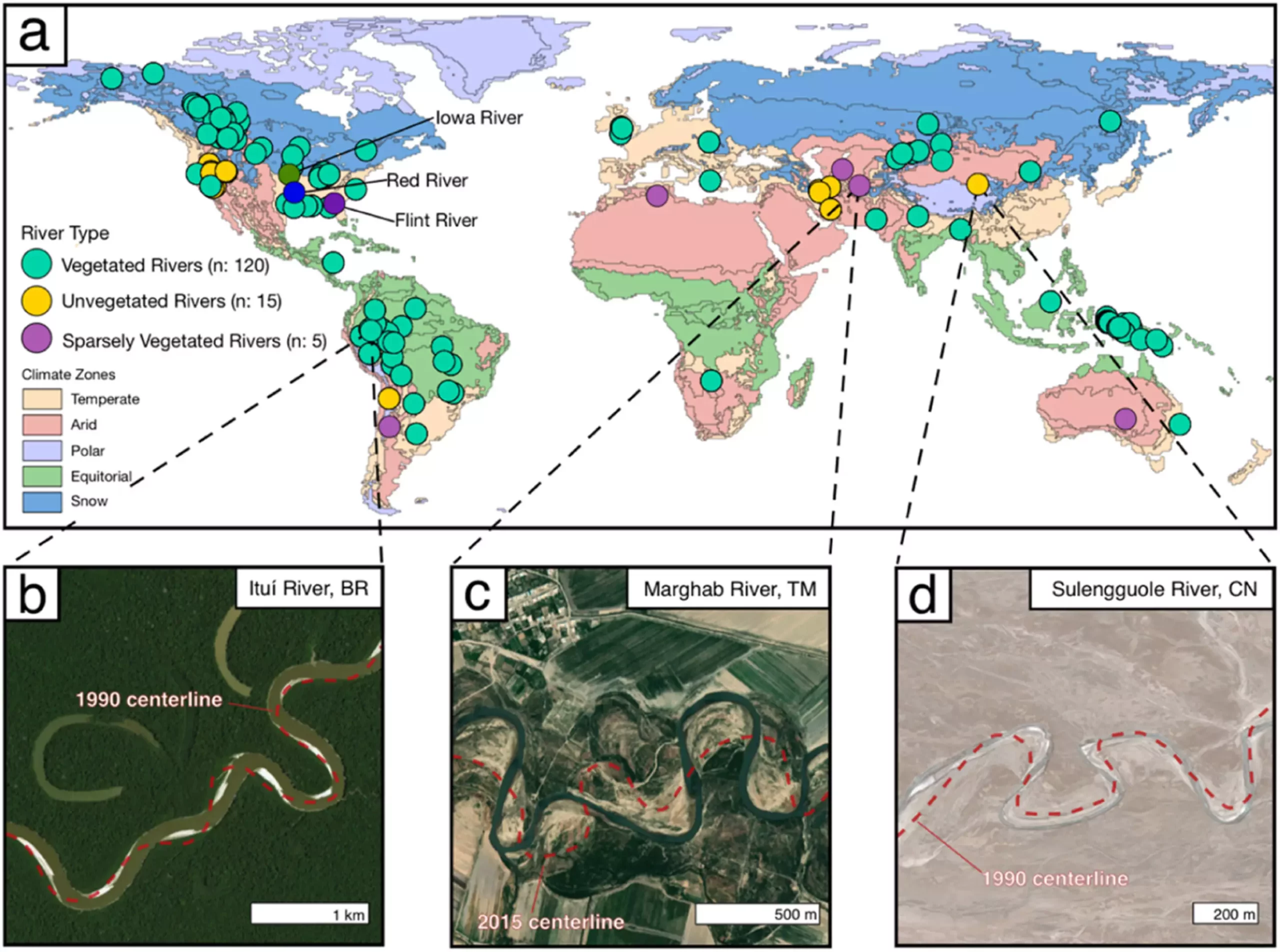Rivers play a crucial role in shaping the landscape as they flow across it. They create valleys, canyons, floodplains, and deltas while transporting sediment from the uplands to the ocean. A recent study conducted by researchers from UC Santa Barbara sheds light on what drives the migration rates of meandering rivers. Lead author Evan Greenberg, along with senior author Vamsi Ganti, compiled a global dataset of meandering rivers to analyze the impact of vegetation and sediment load on channel movement. Contrary to previous studies that focused on the stabilizing effect of vegetation, their research highlights the complex interplay between sediment deposition and bank stabilization.
Meandering rivers experience two primary forces known as “bar push” and “bank pull.” Bar push occurs when sediment deposition forms a sandbar on the inside of a bend, pushing the curve outward. On the other hand, bank pull is caused by erosion on the opposite bank, pulling the bend even farther outward. The study revealed that sediment load has a stronger influence on bar push, while vegetation stabilization plays a crucial role in bank pull. The relationship between these two forces determines the migration patterns of meandering rivers.
Greenberg and Ganti analyzed data from 139 meandering rivers worldwide, representing various regions, climates, sizes, and vegetation types. By modeling each river channel as a series of line segments using satellite imagery, they were able to track the movement of these segments over time. The results showed that rivers carrying a significant amount of sediment migrated faster compared to their size. While vegetation did slow down river migration, the impact was found to be more modest than previously thought.
To further understand the contributions of sediment load and vegetation stabilization, the researchers studied the movement of rivers above and below dams. The results indicated that migration rates slowed downstream of the dams, where sediment supply was limited. This highlighted the significant role of sediment load in driving river bend migration. Greenberg is currently investigating the broader impact of dams on different types of rivers with floodplains to understand their effect on river dynamics.
The findings of this study have critical implications for managing meandering rivers, which are home to millions of people living along their floodplains. As environmental factors like sea-level rise and changes in sediment supply continue to affect river systems, understanding the dynamics of river migration becomes increasingly important. It is essential to anticipate the changes that may occur in river behavior, especially with the predicted increase in sediment supply leading to more active rivers.
Looking ahead, researchers aim to broaden the scope of their model to encompass various types of rivers beyond meandering ones. They recognize the importance of quantifying river mobility across different categories and developing a comprehensive model that captures the changing nature of rivers from their headwaters to the sea. By studying different types of rivers and their migration patterns, they hope to gain a deeper understanding of the dynamics that shape our waterways.



Leave a Reply